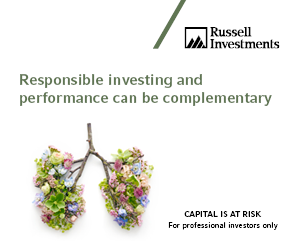How climate change can impact investments

As one of the defining challenges of this generation, climate change is not just an environmental concern, but also an economic one. Already, it’s changing how businesses operate, governments regulate, and individuals consume. It’s no surprise, then, that certain climate factors will ultimately influence which investments turn out to be successful—and which do not.
Unfortunately, as with most predictions, it’s impossible to forecast climate change trends with 100% accuracy. The climate may worsen more than expected, or market participants may react differently than hypothesised. These diverging outcomes are examples of climate risk and have the potential to shock investment performance.

What is climate risk?
To understand how climate change may disrupt our understanding of investment risk, it’s important to first learn what investment risk is usually understood to be. Investment risk can be thought of as the potential for investments to generate an unexpected return outcome, or the range of possible future investment outcomes. Investment risk can also be interpreted as the known range of possible future outcomes. Imagine you were to toss a die, with the resulting number being how much your investment would return. The expected average roll is between three and four—however, you might instead roll a one or a six. This is investment risk.
Because we know that there are multiple future scenarios of climate change, there are also multiple possible consequences on investments. Even if investors set reasonable expectations of the future climate, there is still the potential that it may play out differently than expected. This is climate risk.
Climate risks are typically disaggregated into physical risk and transition risks.1
Physical risks
Physical risks refer to the potential for weather and climate-related damage to affect asset prices. A major concern around climate change is the costs associated with an increasing frequency and intensity of natural disasters and extreme weather, such as floods, storms, droughts, hurricanes and wildfires. These impose costs by damaging existing assets, destroying stock, constraining operations and disrupting existing demand. Certain investments are more sensitive than others when it comes to physical risks. For example, agricultural companies are more at risk of drought-related costs than an information-technology firm.

Transition risks
Transition risks are the risks arising from the shift toward a low-carbon economy. As the climate continues to worsen, the attitudes of market participants are likely to change. Governments are likely to become increasingly open to taxing emissions and subsidising. Consumers may shift their demand towards greener products, while firms may change their business models to accommodate trends. These outcomes fall on a transition scenario spectrum, which creates risk. An example of transition risk is a firm that pollutes a large amount of carbon emissions, and faces the prospect of future regulatory costs, or consumers switching toward firms with better environmental track records.
Market reactions to climate change
When talking about physical risks, the worst impacts of climate change are easier to comprehend because they are tangible. The real difficulty comes when trying to predict the magnitude of these costs over the lifetime of a business. The further out the prediction, the less accurate they are.

Transition risks are even more up in the air. While physical risks are a function of the range of climate and weather outcomes, transition risks are functions of how consumers, businesses and regulators will react to them. This adds an extra layer of unpredictability.
Lastly, it is important to note that market reactions are not only functions of the changing climate, but also of the behavioural quirks present in investors. For example, it’s still unclear whether climate risks are currently efficiently factored into security prices by investors.
Why climate risk is difficult to estimate
Estimating climate risk is hard because of the uncertainty around the true distributions of climate risk.
Unlike investment risk, investment uncertainty reflects the current and future unknowns. In keeping with the prior example, uncertainty would be tossing a die without even knowing the numbers that are painted on each side. In this example, an investor wouldn’t even know what the potential future outcomes are, or their probabilities. The further out we try to forecast climate factors, the more the risk as well as uncertainty.
 Climate science is a relatively young field of study. There’s still much we don’t know about the future of the natural environment, and we know even less about how the market may react to a changing climate.
Climate science is a relatively young field of study. There’s still much we don’t know about the future of the natural environment, and we know even less about how the market may react to a changing climate.
Even as climate science comes to a better understanding of what has generated past climate patterns, there’s still a lot to learn before we can make better forecasts of physical events. The difficulty in forecasting the impacts of transition events is exponentially higher. Estimating how market participants might change their behaviour in different future climate scenarios is fraught with uncertainty, as there is limited historical data from which future relationships can be estimated. In addition, because climate change trends are likely to structurally shift our global economy, historical relationships between the economy and the climate might not even be the same in the future.
How does the industry measure climate risk?
There are currently several metrics that can be used to measure the different types of exposure to climate change.
Physical risk exposures are often measured through quantitative modelling using either historical relationships between climate factors, such as temperature or precipitation and security returns, or through simulations of what the future might look like under certain climate change scenarios.
The most common measure of portfolio climate exposure is carbon exposure. Carbon exposure refers to a company’s carbon emissions and fossil fuel reserves and is generally used to manage transition risk. Firms that emit large quantities of greenhouse gases are more likely to face additional costs of reducing emissions or paying fines. Many investors, therefore, use carbon data as a method of managing their portfolio transition risk exposure.
 Carbon emissions are the releases of greenhouse gas emissions—usually expressed as carbon dioxide equivalents—into the atmosphere. These are typically divided into scope 1, 2 and 3 emissions. Scope 1 emissions are those that are directly emitted during the production process. Scope 2 emissions are indirect, arising when electricity, heat, or steam that has generated emissions during production is then consumed by a buyer. Scope 3 emissions capture a wider range of indirect emissions which occur during upstream and downstream activities in the supply chain (such as transportation or waste disposal).
Carbon emissions are the releases of greenhouse gas emissions—usually expressed as carbon dioxide equivalents—into the atmosphere. These are typically divided into scope 1, 2 and 3 emissions. Scope 1 emissions are those that are directly emitted during the production process. Scope 2 emissions are indirect, arising when electricity, heat, or steam that has generated emissions during production is then consumed by a buyer. Scope 3 emissions capture a wider range of indirect emissions which occur during upstream and downstream activities in the supply chain (such as transportation or waste disposal).
Fossil fuel reserves are the known and potential fossil fuels that a company holds as assets on its balance sheet. The definition of these is more straightforward than that of carbon emissions. Fossil fuel exposures are largely concentrated within specific industries, such as the oil and gas sector.
Despite the introduction of these measurement tools and metrics, many still acknowledge that the investment industry is still learning how to fully estimate climate risks.
Are we getting better at measuring climate exposure?
There is reason to be optimistic about the future of climate-change risk management. As time goes by, climate science is becoming better at understanding complex climate patterns. Climate economists are also developing a better understanding of the potential impacts of climate on the behaviour of market participants.
 The academic literature on climate economics and climate finance is also a fast-developing field. There are also now several large organisations that exist with the primary purpose of improving data quality and availability on various climate risk metrics. All of these factors are likely to make assessing the climate risk of investments easier and allow investors to better gauge the exposures their portfolios have to climate change.
The academic literature on climate economics and climate finance is also a fast-developing field. There are also now several large organisations that exist with the primary purpose of improving data quality and availability on various climate risk metrics. All of these factors are likely to make assessing the climate risk of investments easier and allow investors to better gauge the exposures their portfolios have to climate change.
1 A third type of climate risk is liability risk. Liability risks relate to the possibility that parties that have suffered losses from the previous types of risks seek compensation from those they hold responsible. These risks are more relevant for the insurance industry as they are spill-over risks.
Important information
Unless otherwise specified, Russell Investments is the source of all data. All information contained in this material is current at the time of issue and, to the best of our knowledge, accurate. Any opinion expressed is that of Russell Investments, is not a statement of fact, is subject to change and does not constitute investment advice. The value of investments and the income from them can fall as well as rise and is not guaranteed. You may not get back the amount originally invested.
Issued by Russell Investments Implementation Services Limited. Company No. 3049880. Registered in England and Wales with registered office at: Rex House, 10 Regent Street, London SW1Y 4PE. Telephone 020 7024 6000. Authorised and regulated by the Financial Conduct Authority, 12 Endeavour Square, London, E20 1JN. Russell Investments Limited is a Dubai International Financial Centre company which is regulated by the Dubai Financial Services Authority at: Office 4, Level 1, Gate Village Building 3, DIFC, PO Box 506591, Dubai UAE. Telephone + 971 4 578 7097. This material should only be marketed towards Professional Clients as defined by the DFSA. Russell Investments Ireland Limited. Company No. 213659. Registered in Ireland with registered office at: 78 Sir John Rogerson’s Quay, Dublin 2, Ireland. Authorised and regulated by the Central Bank of Ireland.
KvK number 67296386
© 1995-2020 Russell Investments Group, LLC. All rights reserved.
MCR-00879/18-03-2021






